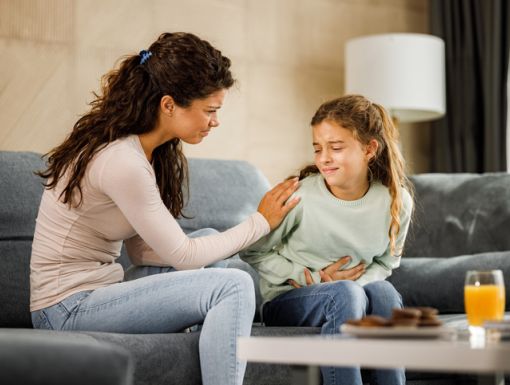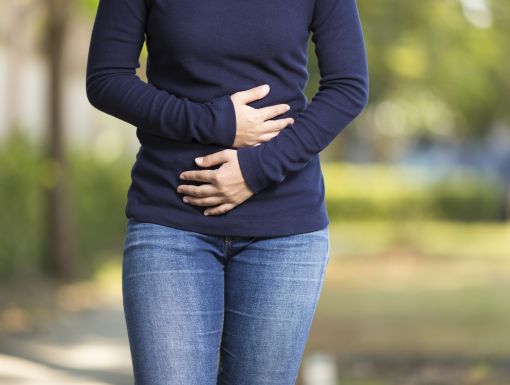
Is It Food Poisoning or 2025 Stomach Flu? A GI Doctor Explains
When experiencing sudden stomach issues, it can be difficult to determine the cause. Stomach flu and food poisoning are two common culprits, but other factors, including medications, can also trigger gastrointestinal symptoms. Understanding the differences can help in identifying the cause and seeking appropriate care.
What is stomach flu? (viral gastroenteritis)
The stomach flu, or viral gastroenteritis, is an infection of the stomach and intestines caused by various viruses, such as norovirus or rotavirus. It spreads through contaminated food, water or contact with infected people. Despite the name, it is not related to the influenza virus.
Symptoms usually begin 24 to 48 hours after exposure and may include watery diarrhea, nausea, stomach cramps and low-grade fever. While uncomfortable, most cases resolve within a few days without medical intervention.
What is food poisoning and how does food poisoning happen?
Food poisoning occurs after consuming food or drinks contaminated with harmful bacteria, viruses or toxins. It can result from improper food handling, undercooking or poor food storage practices. Symptoms often appear suddenly, sometimes within hours of ingestion, and can be more severe than those of viral gastroenteritis.
Food poisoning can cause dehydration and, in some cases, lead to hospitalization. Preventing food poisoning involves regular handwashing, cooking food to safe temperatures, and promptly refrigerating perishable items.
Can medications change bowel habits?
In addition to infections and food contamination, medications can significantly impact bowel habits. One notable example is GLP-1 receptor agonists (such as semaglutide and liraglutide), commonly prescribed for type 2 diabetes and weight management. Brand names include Ozempic, Mounjaro and Wegovy. These medications can slow down how quickly the stomach empties and change how the gut works, which might cause stomach problems:
- Nausea
- Vomiting
- Diarrhea
- Constipation
Other medications that may cause gastrointestinal symptoms include:
- Antibiotics (which can disrupt gut bacteria balance)
- Nonsteroidal anti-inflammatory drugs (NSAIDs, such as ibuprofen)
- Antidepressants
- Iron supplements
- Laxatives (when overused)
If someone on a GLP-1 medication or another prescription experiences sudden changes in bowel habits, it’s important to discuss these symptoms with a healthcare provider.
Symptoms and how to tell the difference
Because stomach flu, food poisoning, and medication-related side effects can present similar symptoms, identifying the cause requires paying attention to timing and other clues.
What are symptoms of food poisoning?
Symptoms can appear quickly after eating contaminated food and may include:
- Nausea
- Vomiting
- Stomach pain
- Diarrhea (watery or bloody)
- Fever
- In rare cases, neurological issues like blurred vision or dizziness
What are symptoms of stomach flu?
Stomach flu symptoms usually develop 24 to 48 hours after exposure and last one to three days. Common symptoms include:
- Watery diarrhea
- Stomach pain
- Nausea or vomiting
- Muscle aches
- Low-grade fever
When should I go to the doctor with stomach problems?
If symptoms are severe, persistent, or accompanied by dehydration, bloody stools or high fever, medical care is essential. Patients on GLP-1 medications who experience ongoing gastrointestinal issues should consult their healthcare provider to assess whether adjustments to their treatment plan are needed.
Understanding these key differences and potential causes can help manage symptoms and ensure appropriate treatment.
Testing and treatment
Doctors can conduct stool tests to identify bacteria associated with food poisoning or viruses linked to gastroenteritis, typically reserved for severe symptoms or strong suspicions of food poisoning. Treatment for both illnesses involves ample fluids and bed rest. The use of antibiotics is not really needed in these situations, unless you have a proven bacterial infection affecting your intestines.
Considering COVID-19
In the current context, it's essential to consider COVID-19 symptoms, with gastrointestinal manifestations like lack of appetite, diarrhea, nausea, vomiting, and abdominal pain. Seeking medical advice becomes crucial if symptoms worsen or align with severe conditions.
Self-care measures
To alleviate symptoms, staying hydrated, consuming low-fat small meals, and resting are recommended. Consulting a doctor is advised for severe belly pain, inability to eat or drink, vomiting blood, blood in bowel movements, or a fever exceeding 100.4 degrees.
Conclusion
While most people recover from food poisoning or stomach flu without definitively identifying the cause, prioritizing hydration and monitoring symptom progression is vital. Seeking medical attention when symptoms escalate ensures timely intervention and appropriate care. Always consult a healthcare professional for guidance on managing and recovering from these illnesses.
Need to speak with a doctor? Ochsner Connected Anywhere offers on-demand access to a healthcare provider from your smartphone, tablet or computer. Start your video visit here.



